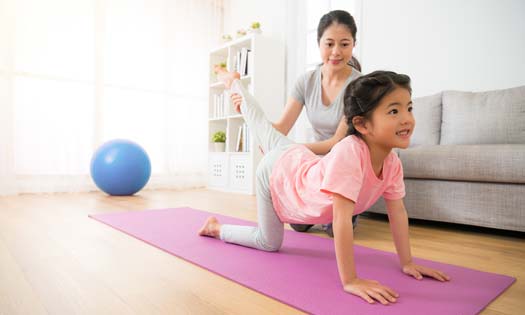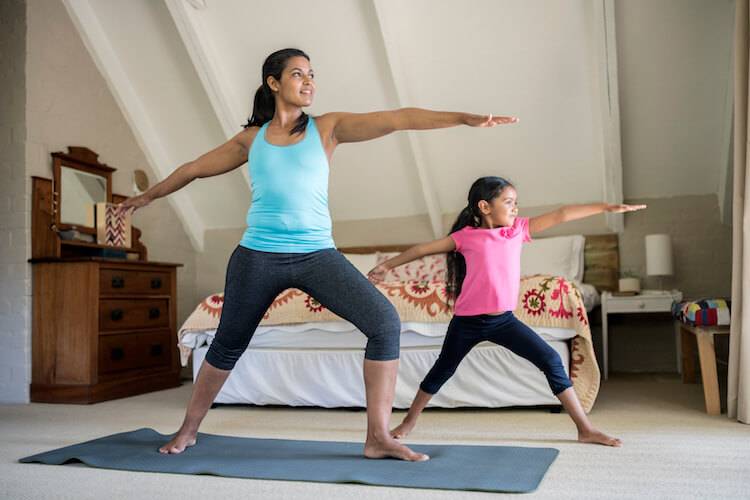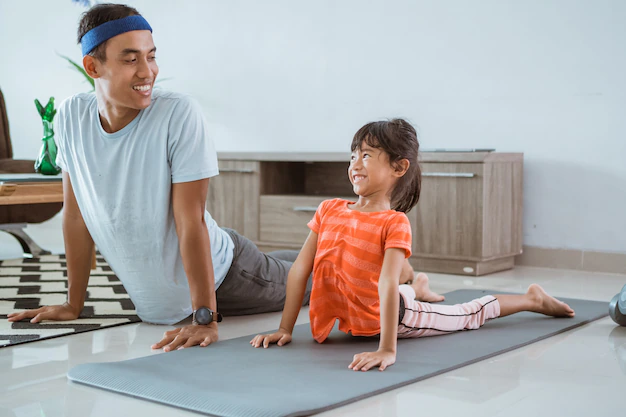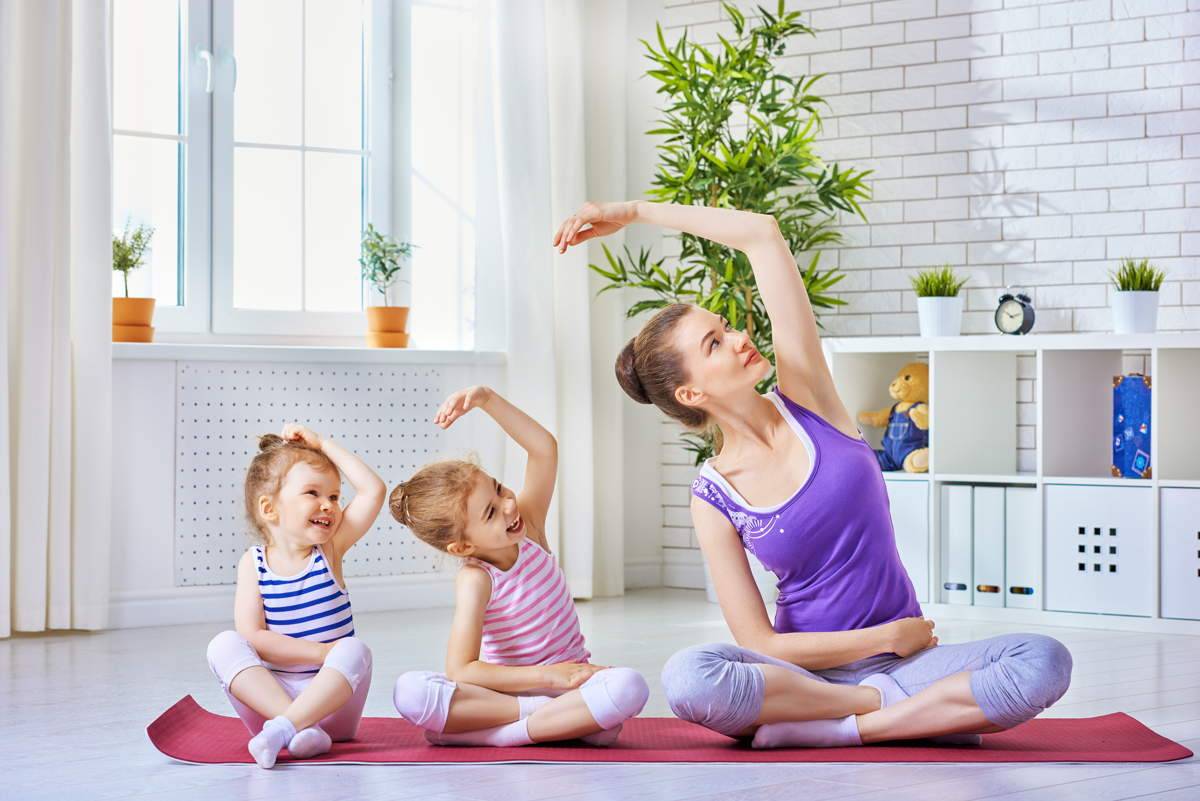Is your child spending excessive time on the couch, missing out on the incredible benefits of exercise? Discover how to play an essential role in ensuring your little one stays active and maintains a healthy lifestyle.
Lack of physical activity and exercise negatively impact your child’s mental well-being. It causes heightened stress, anxiety, and reduced cognitive function! Naturally, we want to steer clear of raising couch potatoes, don’t we?
Fret not! We at Omega Pediatrics have curated an impressive list of engaging and enjoyable ways to get your child off that cozy couch. These activities are a delightful experience, encouraging movement and fostering the development of essential skills along the way.

Couch Potato Kids: A Cause for Concern and the Vital Role of Exercise
Couch potato kids spend much time sitting in front of screens and monitors—watching television, movie marathons, gaming, social media, and simply chatting with friends. Hail the marvels of technology, but it creates a cause for concern for children’s overall health.
It’s because couch potato kids lead a sedentary lifestyle, which can have negative effects on physical and mental health. One of the most important things parents can do is encourage healthy habits early on, including regular exercise and physical fitness.
Physical exercise goes beyond mere physical fitness since it delivers a wide array of astounding advantages. On the other hand, a sedentary life is a prelude to a multitude of health problems, such as obesity, weakened bones and muscles, and cardiovascular issues.
As parents, encourage your kids to find fun and beauty in screen-free activities. We at Omega Pediatrics have drawn up a list below. Read on!
Ways to Get Your Kids Moving–and Exercise
1. Assign household chores to your child.
Prevent your child from sitting all day and watching TV by assigning them household tasks that involve physical activity, such as cleaning their room or helping with gardening. Activities like sweeping, vacuuming, or wiping surfaces can be turned into mini-workouts while enjoying exercise.
Infuse fun into this home activity by adding music and encouraging your child to move energetically. Not only does this promote movement and exercise, but it also teaches responsibility and the importance of contributing to the household.
2. Have sports toys and games accessible.
Provide your child with toys and games that encourage physical activity and exercise, such as jump ropes, hula hoops, or a mini basketball hoop. These toys engage their muscles, improve coordination, and promote active play.
Challenge them to set goals or create imaginative games using the toys. Jumping rope, hula hooping, and shooting hoops can be done indoors or outdoors, providing opportunities for exercise regardless of the weather.
3. Teach your child how to jump rope.
New activities may be able to get your child moving! Jump rope is a fun and effective cardiovascular exercise involving coordination, agility, and endurance. Start with basic jumps and gradually introduce different techniques like cross-overs.
Create challenges or games, such as seeing how many jumps are in a row or inventing a jump rope routine to their favorite song. Jumping rope can also be done indoors or outdoors, making it a versatile activity.

4. Let your kids have active breaks during study time.
You don’t need toys or tools to get your child to exercise. Encourage short active breaks while studying, such as doing jumping jacks or stretching. Physical activity during study breaks helps release energy, improve focus, and enhance overall productivity.
Set a timer or establish specific study-to-break intervals to maintain a balanced routine. Encourage your child to choose their preferred physical activities during breaks. ensuring they engage in movements that energize them and help them reset their concentration.
5. Engage in dance parties.
Have spontaneous dance parties at home where everyone can let loose and move to their favorite tunes. Dancing is a fantastic way to improve cardiovascular fitness, flexibility, and coordination. Take turns choosing songs and teaching each other new dance moves.
6. Have your kids walk or cycle their way to school.
If the school is nearby, your child can walk or cycle to school instead of taking a car or bus. This promotes physical activity to start their day with fresh air and movement.
Walking or cycling with friends can even make the journey more enjoyable and provide an opportunity for social interaction! Just ensure that your child follows road safety rules and wears appropriate safety gear, such as a helmet, when cycling.
7. Have regular family walks.
You can plan outdoor bonding for the whole family. Take regular walks, exploring local parks or nature trails. Walking is a low-impact exercise that benefits cardiovascular health and promotes conversation and bonding time with your child.
You can also make these walks more engaging by playing games like “I Spy” or collecting items like leaves or rocks along the way.
8. Think of outdoor games.
While you’re outside with your child, encourage outdoor games like tag, hide-and-seek, or catch. These games promote running, jumping, and coordination skills while enjoying the fresh air. These also provide social interaction and imaginative play, fostering creativity and teamwork.
Outdoor games can be modified based on your child’s age and abilities, making them accessible and enjoyable for everyone involved.
9. Plan adventurous outdoor activities.
You can heavily impact your child’s physical activity with the activities you and your family do. Plan family hiking trips to explore nature and enjoy physical activity together. Hiking allows your child to connect with the outdoors, appreciate nature, and improve cardiovascular fitness.
Choose trails that match your child’s abilities, and gradually increase the difficulty over time. Encourage them to observe and learn about the plants, animals, and natural features they encounter along the way.
10. Explore nature parks.
Outdoor activities aren’t just limited to extreme ones like hiking. A walk in the park will do. Take your child on nature walks to explore their surroundings. This fosters a love for the outdoors and physical activity.
Nature exploration allows your child to discover new plants, animals, and natural wonders. Encourage them to touch leaves, smell flowers, and listen to bird songs.
11. Create DIY obstacle courses.
Set up obstacle courses in your backyard or living room using pillows, hula hoops, and other household items. These challenge your child’s agility, balance, and problem-solving skills. Design the course based on their age and abilities, incorporating crawling, jumping, and balancing elements.
Time your child as they navigate through the course or create friendly competitions with siblings or friends. These obstacle courses can be adjusted and modified to keep them exciting and fresh.
12. Bring your child to the playground regularly.
Playgrounds offer a variety of equipment that promotes physical activity, including slides, monkey bars, and climbing structures. Visit local playgrounds regularly, allowing your child to climb, swing, and engage in active play.
Your child will try different activities, challenge themselves, and interact with other children. Just ensure that the playground is age-appropriate and that you supervise your child for safety. Playground visits provide opportunities for exercise, socialization, and sensory exploration.
13. Bond over the waters.
Take your child swimming or encourage water games in a pool, lake, or beach. Swimming is a low-impact exercise that engages the entire body and promotes cardiovascular fitness. Play games like water polo, races, or diving for objects to make it more enjoyable.
Ensure water safety by supervising your child at all times and following appropriate swimming guidelines. Or, you could enroll your child in swimming lessons.

14. Let your kids do yoga.
Yoga promotes strength, flexibility, balance, and mindfulness. Look for age-appropriate yoga videos or consider enrolling your child in a local yoga class. Make it enjoyable by using animal-themed poses, storytelling, or incorporating fun props like yoga blocks or balance balls.
Yoga can be practiced indoors or outdoors, providing a calming and energizing experience for your child.
15. Let them join dance or sports classes.
Enroll your child in dance classes or other organized sports activities based on their interests and preferences. Dance classes enhance coordination, flexibility, and rhythm while allowing self-expression through movement. Sports activities enable learning new skills, building teamwork, and friendly competition.
Research local dance studios or sports clubs that offer age-appropriate classes and fit your child’s interests. Then, attend trial classes or open-house events to find the best fit. Support and encourage your child’s participation, allowing them to explore their passion for movement and sports.
16. Enroll your kids in martial arts classes
Let your child participate in martial arts classes, such as karate or taekwondo. This improves their strength, flexibility, and discipline. Martial arts teach self-defense techniques while promoting self-confidence and self-discipline.
The structured classes and belt progression system provide a sense of achievement and motivation for your child. Research local martial arts studios and find a reputable instructor who specializes in teaching children for safety.

Go for an Active and Healthy Lifestyle with Your Kids
Break the cycle and empower your couch potato kids to embrace the amazing experiences and benefits that exercise offers. Say goodbye to sedentary days and hello to an active and healthy lifestyle! Together, we can ensure a brighter and healthier future for your little one.
Here at Omega Pediatrics, we will walk this journey with you. Our team is fully committed to providing comprehensive care for your child’s physical and emotional well-being. We understand the challenges you face as a parent, and we’re here to offer our unwavering support!



